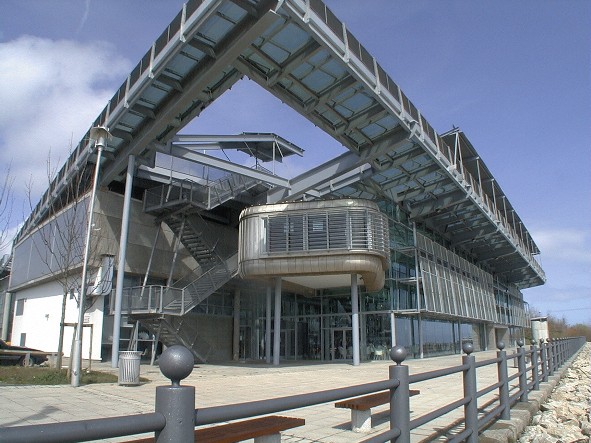A PhD student at the University of Sunderland has created a stunning chandelier – using almost 1000 pieces of upcycled glass.
Helen Pailing created her chandelier – entitled Adorn – using cut-off pieces of glass discarded by lamp makers. These pieces – of all sizes and shapes – were reworked by Helen and then wrapped in strips of copper by volunteers.
Upcycling is the transformation of old items or waste materials into useful or decorative products.
Helen’s chandelier now hangs in Wearside’s National Glass Centre. A semi-permanent installation, Adorn will change in appearance as time passes due to the effects of the environment on the finish of the copper.
Helen – whose PhD is entitled ‘Recrafting Waste in Glass and Ceramics’ – said, “I loved the organic shape and form of this glass, created as a result of the making process.”
“Adorn hangs like a giant pendant, an adornment for the building.”
The head of arts at the National Glass Centre, Julia Stephenson, said, “The National Glass Centre commissioned Helen Pailing to create a new work to be displayed in the building’s foyer.”
“This space is in a prominent location in a busy public building.”
“The name of the piece is highly appropriate as the building now wears its own contemporary jewellery. Everything about the piece has relevance to our time, our priorities and our location.”
“The piece draws attention to both environmental issues and the exceptional skills of the creators and their direct link to Sunderland’s long-term connection with glass.”
“Upcycling is fast becoming an established and even a standard approach within the crafts. There is, however, nothing standard about Helen Pailing’s practice. Her approach is utterly uninhibited, fresh and original.”
Earlier this year, Helen worked with local teenagers to help them create their own chandeliers out of waste glass. The teenagers’ pieces were exhibited in the National Glass Centre’s Learning Gallery in June and July.
(The featured image – showing Sunderland’s National Glass Centre – is courtesy of Simon Letouze and Colin Davison, from Wikipedia Creative Commons.)













